Overview of Rocky Mountain National Park
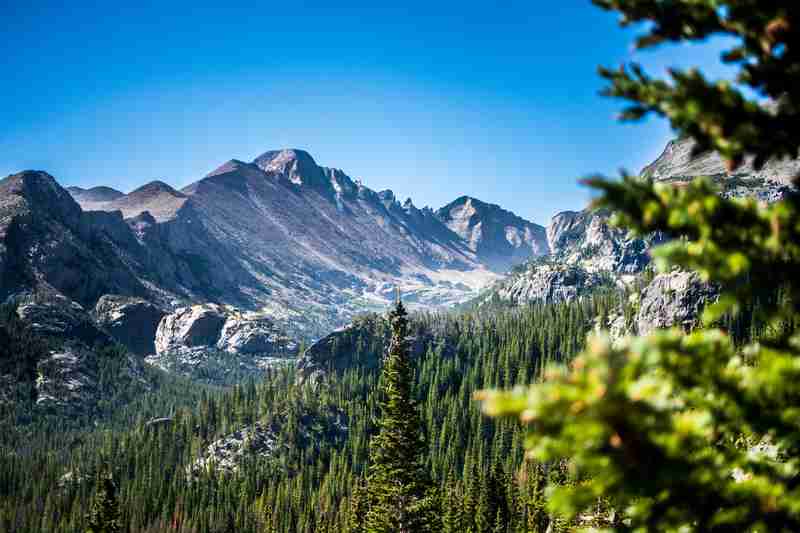
Rocky Mountain National Park is an iconic destination for outdoor enthusiasts and nature lovers alike. Spanning over 400 square miles of mountains, forests, and alpine lakes, the park offers a glimpse into the wonders of the wild. With miles of hiking trails, scenic drives, and opportunities for wildlife viewing, visitors can explore the vast wilderness of the Rocky Mountains. From the stunning beauty of Bear Lake to the majestic peaks of Longs and Hallett, the park presents a plethora of natural attractions that will leave visitors in awe. In this article, we’ll provide an overview of Rocky Mountain National Park, detailing its history, geography, and some of its most popular attractions.
History of the Park
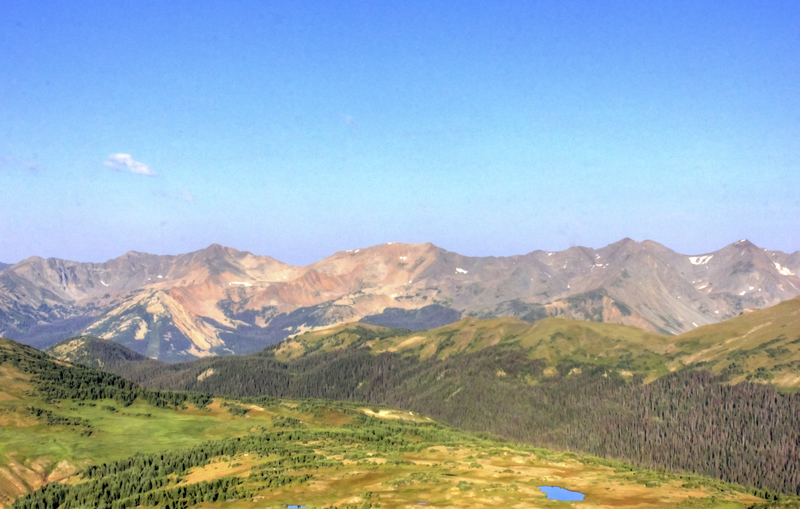
Rocky Mountain National Park is a popular destination for tourists around the globe and is a crown jewel in the U.S. National Park System. The park’s rich history and breathtaking alpine scenery are a testament to the preservation efforts of the National Park Service. The park’s story begins long before its establishment, with indigenous tribes, hunters, and explorers living among the towering peaks.
The park came into existence in 1915, strengthening the push for conservation in the United States. With the establishment of the park, the government vowed to preserve the unique and diverse ecosystems within its boundaries. Throughout the years, the park has continued to evolve with the times and the needs of modern-day visitors.
Rocky Mountain National Park’s history is full of tales of indigenous tribes and early settlers who relied on its natural resources. Its establishment marked a significant milestone in the history of conservation, and it is considered one of America’s national treasures. Visitors can explore the park’s unique features, such as the Alpine lakes and ancient glaciers. Additionally, the park offers miles of hiking trails, scenic drives, and wildlife viewing opportunities that keep visitors engaged and excited.
In conclusion, Rocky Mountain National Park has a rich and fascinating history that makes it stand out as a unique and popular destination for travelers worldwide. Its establishment marked a significant step towards conservation, and to this day, it remains a testament to the importance of preserving our natural environment.
Trail Ridge Road
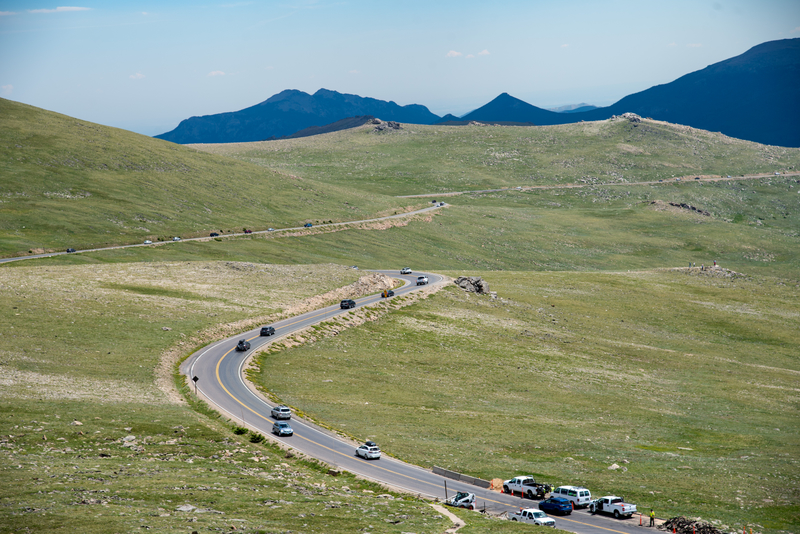
Trail Ridge Road is a spectacular scenic drive in Rocky Mountain National Park that spans over 48 miles and reaches an elevation of more than 12,000 feet. It’s the highest continuous paved road in the United States and offers breathtaking views of the surrounding mountains and valleys. The road is open seasonally, usually from late May through October, and provides access to various hiking trails, picnic areas, and campgrounds.
Visitors should note that the road is only open during the summer months due to its high elevation and harsh weather patterns. It’s best to plan your visit to the park between late May and early October to avoid any road closures due to inclement weather that could turn deadly.
One of the stops along the road is the Alpine Visitor Center, which offers visitors a chance to learn about the park’s wildlife, history, and geology. Along with this interpretive center, there are also several hiking trails to explore, ranging from easy to challenging, and all offer stunning panoramic views of the surrounding mountains.
Unique Features of Trail Ridge Road
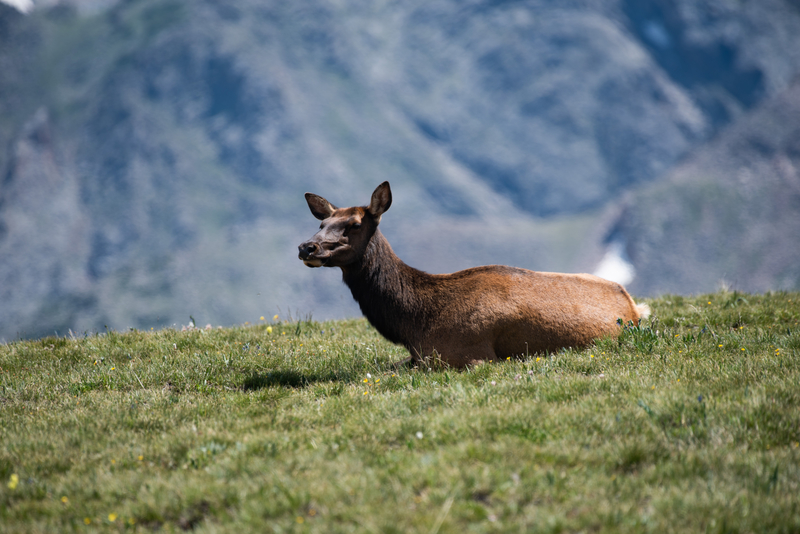
A unique feature of the road is the opportunity to spot an array of wildlife that call the Rocky Mountains their home. Keep an eye out for mule deer, elk, and even the occasional moose as they graze in the meadows along the roadside.
In addition to the stunning views and wildlife sightings, Trail Ridge Road also offers several stops along the way that showcase the history and geology of the area. One such stop is the Alpine Visitor Center, which provides visitors with an opportunity to learn about the park’s diverse ecology, geology, and geography. With interactive exhibits, informative ranger-led programs, and an array of books and souvenirs, the center is an excellent way to enhance your experience on Trail Ridge Road.
Another unique feature of Trail Ridge Road is the chance to explore several mountain lakes and hiking trails that offer incredible vistas of the park’s landscape. Bear Lake, Sprague Lake, and Gem Lake are just a few of the stunning bodies of water that visitors can enjoy. Meanwhile, the park’s many hiking trails allow visitors to explore the unique ecosystems of the Rockies while taking in the fresh alpine air.
Rocky Mountain National Park’s Scenic Drives
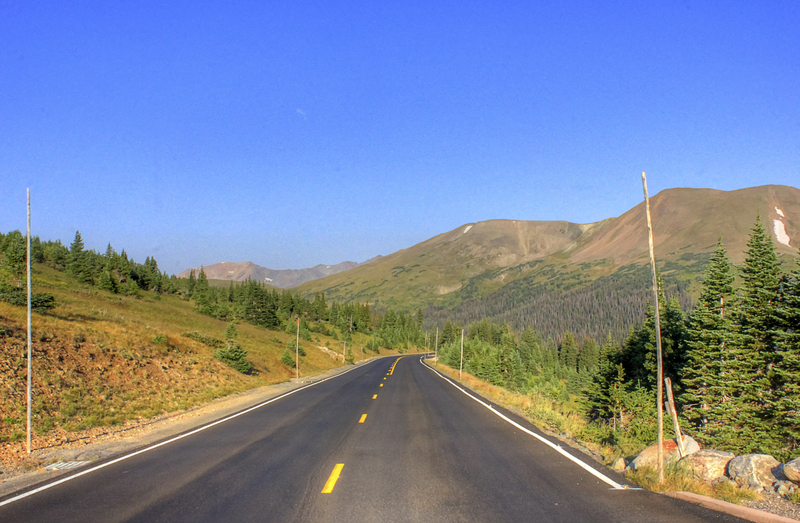
Rocky Mountain National Park is home to some of the most breathtaking landscapes in the United States, making it a popular destination among nature lovers. While hiking is undoubtedly the best way to explore the park’s varied terrain, its scenic drives offer a fantastic opportunity for visitors to take in the area’s natural beauty from the comfort of their own vehicle. From the winding Trail Ridge Road to the stunning Bear Lake Road, Rocky Mountain National Park’s scenic drives are an absolute must-see for anyone visiting the area.
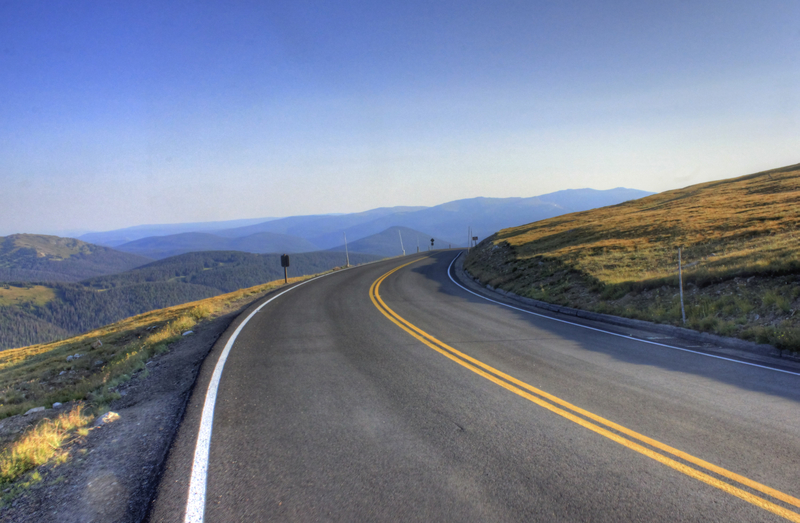
Bear Lake Road
Bear Lake Road is a scenic route located in Rocky Mountain National Park that serves as a gateway to some of the park’s most iconic hiking trails. This 9-mile road provides access to the Bear Lake trailhead, which is one of the park’s most popular trailheads, with trails leading to dreamy destinations such as Emerald Lake, Nymph Lake, and Lake Haiyaha.
The significance of Bear Lake Road cannot be overstated, as it is one of the few roads in the park that is open year-round, providing visitors with stunning views no matter the season. The road starts at the park’s Bear Lake entrance, winds through the breathtaking Moraine Park, and ends at the Bear Lake parking lot.
One of the unique features of Bear Lake Road is its accessibility. The road is paved and well-maintained, making it easy for visitors to drive through and enjoy the stunning scenery it offers. Additionally, the road provides visitors with ample opportunities for wildlife viewing and amazing views of the park’s pristine alpine lakes, including Bear Lake itself.
However, it’s important to exercise caution while driving on Bear Lake Road, especially during the winter months, when the road can become icy and slippery. In fact, the road is often closed to traffic during the winter, and visitors are encouraged to check the park’s website or call ahead for current road conditions and closures.
Old Fall River Road
Old Fall River Road holds a special place in the history of Rocky Mountain National Park. It was the first road to cross the mountains, established in 1920, and has been a popular attraction for visitors ever since.
This one-way, 11-mile gravel road winds through some of the park’s most scenic landscapes, providing visitors with breathtaking views of the mountains, alpine forests, and meadows. The drive is a testament to the ingenuity and determination of the early park developers who built it.
What sets Old Fall River Road apart from other drives in the park is its unique characteristics. The road is narrow and steep, with hairpin turns that require careful driving. Its maximum speed limit is 15 mph, allowing visitors to fully appreciate the surroundings and take in the stunning natural beauty. Along the way, there are several pull-offs and viewpoints that offer opportunities to witness the splendor of the park, including the picturesque Chasm Falls.
Driving Old Fall River Road requires caution and attention to safety. Visitors are advised to stay alert for oncoming traffic, as the road is one-way and vehicles coming from the opposite direction have the right of way. It’s important to keep a safe distance from the car ahead and be mindful of wildlife that may be crossing the road.
Currently, there is a construction project underway at the Fall River Entrance, which may impact visitors. The entrance is closed to motor vehicles, but visitors can still access Old Fall River Road via a temporary entrance nearby. The project’s completion is expected in 2022 and will provide improved access and facilities for visitors.
Alpine Visitor Center – highest elevation road in the park
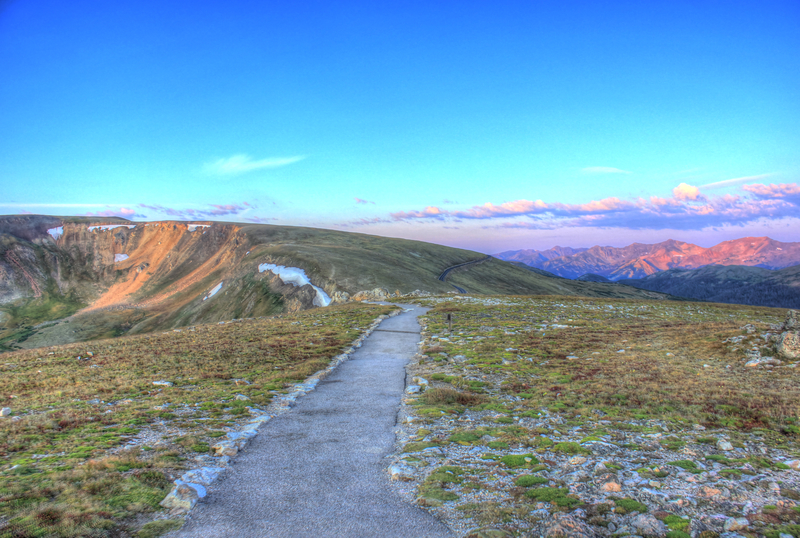
At an impressive 11,796 feet above sea level, the Alpine Visitor Center is truly a sight to behold. Situated atop Trail Ridge Road, the highest elevation road in Rocky Mountain National Park, this visitor center offers panoramic views of the surrounding mountains that are simply breathtaking.
As visitors arrive at the center, they are immediately greeted by the unparalleled natural beauty of the park. Once inside, they will be treated to a wealth of interpretive exhibits and educational programs that help them understand and appreciate the unique ecosystems that exist in this mountainous region.
One of the most memorable experiences at Alpine Visitor Center is simply taking in the stunning views. Whether visitors choose to venture out onto the observation deck or look through the center’s large windows, they will be rewarded with sweeping vistas that showcase the full range of the park’s features.
For those who want to take home a memento of their visit, the center’s souvenir shop offers a wide range of memorabilia and gear to help them remember their time spent at the highest altitude road in Rocky Mountain National Park. And with temperatures that can dip lower than expected, it’s wise to visit the shop to stock up on warm clothes and accessories to make the most out of the visit.
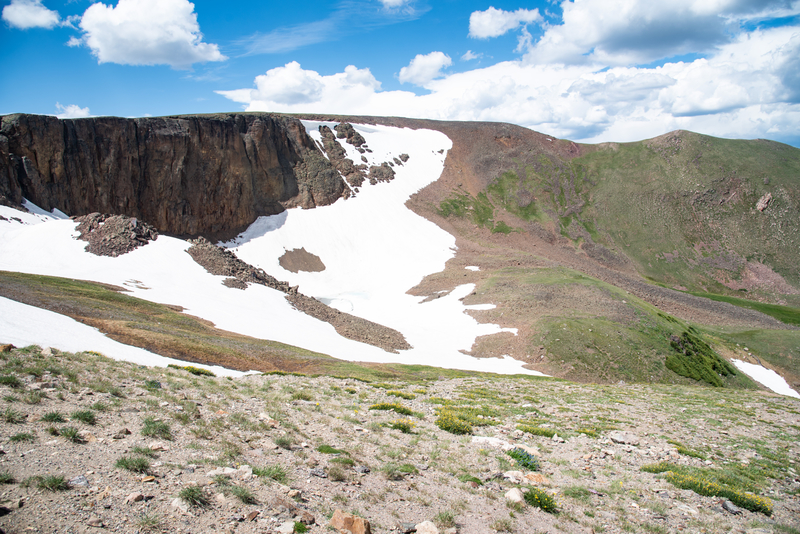
Hiking Trails

Rocky Mountain National Park offers miles of hiking trails for visitors to explore its rugged terrain and stunning landscapes. From easy nature walks to challenging backcountry treks, there is a hiking trail for every level of adventurer. Whether visitors want to spot wildlife, marvel at towering peaks, or simply revel in the beauty of alpine lakes, the park’s hiking trails are the perfect way to immerse oneself in the wonders of nature.
Sprague Lake Trailhead and Dream Lake Loop Trail
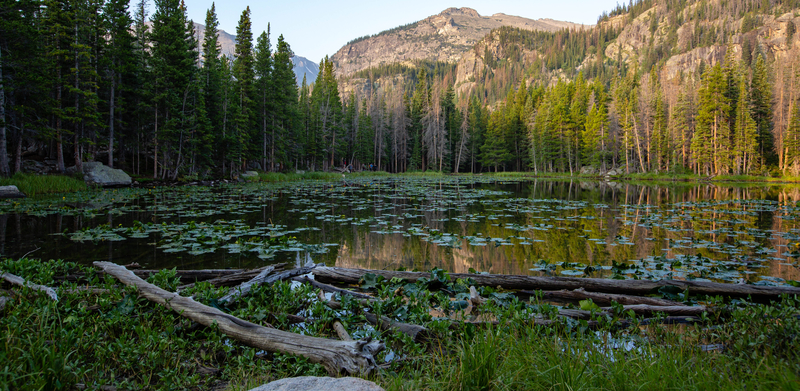
The Sprague Lake Trailhead and Dream Lake Loop Trail is a highly frequented hiking route within Rocky Mountain National Park. The trailhead is located in Glacier Gorge at the Bear Lake trailhead parking lot and is well-marked, leading hikers to the stunning Dream Lake. The trail is gorgeous, with stunning views and natural beauty that include crystal clear waters and cutthroat trout swimming around.
On the way to Dream Lake, hikers will also come across Nymph Lake, a smaller but no less beautiful lake with blooming lily pads during summer. Visitors to Rocky Mountain National Park will need to keep in mind that Bear Lake trailhead is a very busy trailhead with the parking lot often filling up quickly. Regardless of the busy trailhead, the Dream Lake hike is worth the effort and is a highlight of any park visit.
The sparkling waters and stunning views of Dream Lake are truly magnificent, and the journey to the lake is an adventure in itself. For hikers looking for an unforgettable experience, the Sprague Lake Trailhead and Dream Lake Loop Trail is a must-do hike during your visit to Rocky Mountain National Park. Pack your bags and get ready for an amazing adventure!
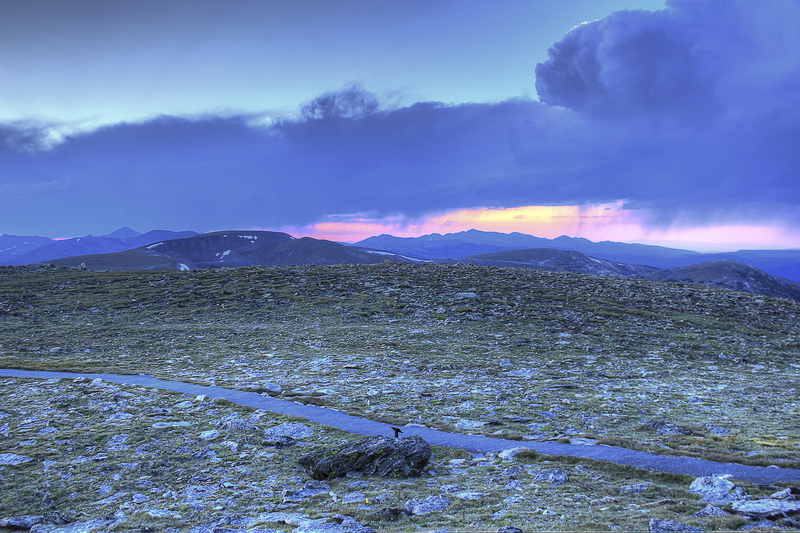
Alberta Falls and Mills Lake Loop Trails
Alberta Falls is a gem of the park and one of the most popular destinations, easily accessible via a mostly uphill 1.7 mile hike from the Glacier Gorge parking lot. Visitors are rewarded with stunning views of the waterfall cascading down a series of rocky ledges. While the falls can be admired from the main viewpoint, a network of short trails alongside Glacier Creek gives visitors the option to discover their own favorite vantage point. Regardless of the trail, hikers can expect to enjoy the peaceful sounds of the gushing water and the refreshing mist of the falls.
Mills Lake is another fantastic attraction in Rocky Mountain National Park, and visitors can reach it by following the Glacier Gorge Trail and passing Alberta Falls and Glacier Falls. This serene lake is surrounded by boulders and towering mountains, making it an idyllic spot to relax and admire nature’s wonders. Hikers can find plenty of rest areas along the way to the lake or choose to take a dip in the cool waters. The views of the sky, mountains, and shimmering lake make for an unforgettable experience.
It’s important to note that parking at the Glacier Gorge Trailhead is limited and fills up quickly, especially during peak times, so it’s recommended to arrive early or consider starting the hike from a nearby location. Despite the limited parking, Alberta Falls and Mills Lake Loop Trails are popular destinations loved by tourists and locals alike.
Longs Peak and Hallett Peak Hikes
Longs Peak, at 14,259 feet, is the highest peak in the park and an iconic destination for hikers. It’s important to note that this is a challenging hike and should only be attempted by experienced hikers. The hike to the summit is a 15-mile round trip with an average hiking time of 10-15 hours, depending on your speed and the weather. The elevation gain is significant at about 5,000 feet, so hikers should be prepared for steep inclines and high altitudes. However, the reward is well worth the challenge as the summit of Longs Peak offers stunning panoramic views of the park and surrounding areas.
Hallett Peak is a more manageable hike but still provides hikers with a challenge and breathtaking views. The 7.2-mile round trip hike has an elevation gain of 2,800 feet and offers stunning views of the Continental Divide, the surrounding peaks, and alpine tundra. Hallett Peak is a great option for those looking for a challenging but shorter hike than Longs Peak.
